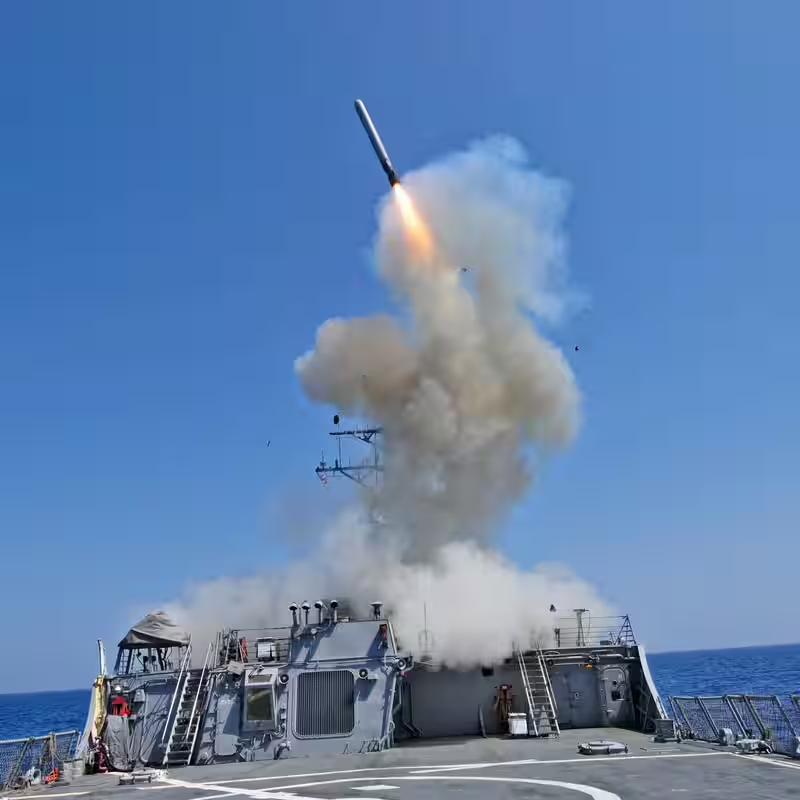Table of Contents
- Trump’s Tomahawk Announcement Shakes Global Diplomacy
- Why Tomahawk Missiles Would Change the War
- Kremlin Warns of ‘New Stage of Escalation’
- Can Ukraine Even Use Tomahawks?
- The Trump-Putin Friendship Under Strain
- Europe Pushes for Stronger U.S. Support
- What Happens Next?
- Sources
Trump Threatens to Give Tomahawks to Ukraine
In a dramatic shift that could redefine the Ukraine war, President Donald Trump announced on Tuesday, October 14, 2025, that he is seriously considering arming Ukraine with U.S.-made Tomahawk cruise missiles—long-range weapons capable of striking deep inside Russian territory.
“He would like to have Tomahawks,” Trump said of Ukrainian President Volodymyr Zelensky, who is scheduled to visit the White House this Friday. “We have a lot of Tomahawks.”
The Trump Tomahawks threat—whether real or rhetorical—marks a stark departure from the cautious arms policy of the Biden administration and signals Trump’s mounting frustration with Russian President Vladimir Putin, whom he once called “a friend.”

Why Tomahawk Missiles Would Change the Game
With a range exceeding 1,000 miles, Tomahawk missiles could allow Ukraine to strike strategic Russian military and energy infrastructure far beyond the front lines—something currently impossible with Western-supplied weapons.
During the Biden era, the White House carefully calibrated arms deliveries to avoid provoking direct NATO-Russia conflict. Even the Army Tactical Missile System (ATACMS), approved in 2023, had a range of just 185 miles.
Tomahawks represent a quantum leap. “This isn’t just escalation—it’s a potential red line,” said Liana Fix, a Europe fellow at the Council on Foreign Relations.
Kremlin Reacts with Alarm
Russia did not take the threat lightly. Dmitry Peskov, Putin’s spokesman, called the idea “of extreme concern” and warned it would mark a “qualitatively new stage of escalation”—possibly even in U.S.-Russia relations.
At a recent foreign policy forum in Sochi, Putin himself praised Trump but drew a hard line: sending Tomahawks to Ukraine would be unacceptable.
Can Ukraine Even Use Tomahawks?
Despite the headlines, major logistical barriers remain. Ukraine lacks the naval ships or ground-based Typhon launchers required to fire Tomahawks. The U.S. would need to supply both the missiles and the launch systems—a move that would embed American military infrastructure directly into Ukraine’s war effort.
Defense Department officials confirm plans exist to transfer the weapons if Trump gives the order—but questions linger about storage, training, and how many missiles could realistically be deployed.
The Trump-Putin Friendship Frays
Trump’s tough talk reflects a shift in his relationship with Putin. Once eager to broker deals with the Russian leader, Trump now criticizes him openly: “His economy is going to collapse… I’d like to see him do well, but he just doesn’t want to end that war.”
Analysts suggest Trump sees the Tomahawk threat as leverage—a way to force Putin back to the negotiating table, much like his recent Gaza peace deal, which he claims succeeded by “letting Israel destroy Hamas.”
Europe Rallies Behind Stronger Support
European allies are quietly encouraging the move. Under a new NATO financing model, countries like Germany, Denmark, and Canada are purchasing U.S. weapons and donating them to Ukraine. So far, four packages worth $2 billion have been delivered.
“Such support is vital,” said NATO spokesperson Col. Martin O’Donnell, underscoring a coordinated push to signal that the West remains united—and willing to escalate if necessary.
What Happens Next?
All eyes are on Zelensky’s White House visit this Friday. Will Trump approve the Tomahawk transfer—or was this just strategic bluster?
Either way, the message is clear: the U.S. is no longer playing defense. As Trump put it: “It’s like a great team in sports that has a fantastic defense, but is not allowed to play offense. There is no chance of winning!”




